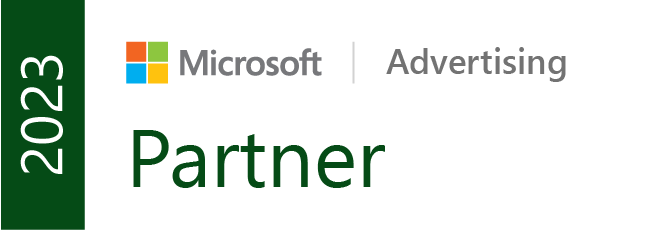
When you want to start advertising a product on the Google Ads marketing platform, a lot of questions pop into your head:
Which campaign type should I use?
What bidding type works best?
How much time and effort do I need to invest to get results?
How much should I spend? 🤔
It can be a lot to take in, so let’s break down the process step by step.
Want to brainstorm with our team on new ways to scale your business with YouTube Ads (and other performance video platforms)?
Join us for a free YouTube ad brainstorming session👇
Step 1: Get to know your product inside and out
First things first, you’ve got to get to know your product or service inside and out. Before jumping into Google Ads, it’s important to have a solid understanding of what you’re promoting. Here’s a couple of things to keep an eye on:
- Take a closer look at what your product or service offers. What are the key features? More importantly, what benefits do these features bring to your customers? This is what you’ll highlight in your ads, so it’s crucial to get it right. Think about the specific problem your product solves. People are always looking for solutions, so if you can identify and address their pain points in your ads, you’re already ahead. Figure out what makes your product stand out—is it a unique feature, a better price, or maybe unmatched quality? Knowing this will help shape your ads and messaging. ✨
- Understanding your customer avatar is key. What’s their age, gender, location, income, and lifestyle? The clearer you are about who you’re talking to, the easier it will be to target them with your ads. And don’t forget to scope out the competition! 🕵️ Use tools or simply Google search to see what kind of ads they’re running. This can give you a sense of what’s working in your market and also where you might have an edge.
- Think about seasonality. Are there certain times of the year when your product sells best? Make sure you’re aware of seasonal trends so you don’t end up wasting money at the wrong time, instead of preparing for the best possible moments to advertise.
- Also, take a good, hard look at your product’s awesomeness. Is it the great price, outstanding quality, or a feature that competitors don’t offer? These strengths should be the main points of your ads. 🎯 If you’ve got a killer discount or a limited-time offer, make sure that shines through in your ad copy. On the flip side, be honest about potential weaknesses. Knowing this in advance lets you address those issues in your marketing or adjust your targeting.
- Now that you’ve got a good understanding of your offer, think about what you want to achieve with your Google Ads campaign. Are you looking to boost sales, get more leads, or simply increase brand awareness? 🏆 Setting clear goals will help guide every decision you make, from the campaign type to the budget.
Step 2: Campaign type & budget
Now that you’ve got a handle on your product and target audience, it’s time to move on to the next step: choosing your campaign type and budget. These two factors are super connected and set the tone for your entire marketing strategy. Basically, this is where you decide if you want to go for a high-risk, high-reward strategy or stick with something more safe and controlled. 🎢
- With search campaigns, you are making the safest bet. These campaigns show your ads to people who are actively searching for specific keywords related to your product. It’s like putting your ad in front of people who already have an interest in what you’re offering, so the risk is lower. It’s all about capturing that intent—people are searching because they’re likely looking to solve a problem or make a purchase. 🛒
- If you’re in e-commerce, shopping campaigns are another low-risk option. They display product images, prices, and descriptions directly on the search results page. This means you’re giving potential customers a lot of info upfront, which can lead to more qualified clicks. Plus, shopping ads often have a high click-through rate (CTR) because they’re so visual and straightforward. 🛍️
- Another way to go is display campaigns. These types of ads can be a bit risky due to low-quality traffic, but they’re definitely worth testing out if you have a bit of budget flexibility. You might catch the eye of someone who wasn’t actively searching but ended up interested in your offer.
- Next in line are our high spenders. The money eaters and the scale gods. 💸 Yes, I’m talking about Performance Max, YouTube, and lately, Demand Gen. For video advertising, if you nail your targeting and creative, you can run circles around other marketing efforts. However, since it’s a bit more expensive and requires a solid video strategy, it’s a riskier option for those just starting out. 🎥 And lastly, Performance Max campaigns—a mix of all the above, sometimes the very pillar of Google Ads marketing with high potential. It’s another campaign type that’s ready to chew through your budget with hopes of a high reward.
Your budget isn’t just about how much you’re willing to spend; it’s about how much you can afford to risk. If you’re starting out and every dollar counts, it’s smart to go for a more controlled campaign like Search or Shopping. These let you focus on capturing high-intent users, so you’re not burning through your budget with random clicks. 💰 Think of your budget on both a daily and monthly basis. A clear daily budget gives you control over your day-to-day efforts, while a monthly budget keeps your overall performance in check, reducing stress and keeping your work more enjoyable. 🎯
Now, another part of the budget is the bidding strategy. Let’s look at the two “main” ones: tCPA (Target CPA) and Maximize Conversions (MC). Target CPA bidding automatically finds an optimal bid for your ad each time it’s eligible to appear by using historical information about your campaign. For example, if you choose a target CPA of $10, Google Ads will automatically set your bids to try to get you as many conversions at $10 on average. On the other hand, Maximize Conversions bidding uses advanced AI to optimize bids for every auction, helping to get the most conversions within your budget, regardless of the CPA. In essence, Maximize Conversions will spend your budget to find the highest number of conversions, while tCPA will try to stick as close as possible to your target cost.
Whichever route you take, it’s usually a good idea to start with a smaller budget to test the waters. Run your campaigns for a couple of weeks, gather some data, and see what’s working. Once you’ve got some solid results, you can start increasing your budget and maybe try out other campaign types. 📈 By carefully choosing your campaign type and setting a realistic budget, you can align your marketing strategy with your risk tolerance and business goals. Whether you play it safe with search campaigns or go big with video ads, having a clear plan in place is key to making your Google Ads journey successful. 🚀
Step 3: Monitor your performance
So, you’ve set up your campaigns and they’re live—great! 🎉 But this is where the real work begins. Google Ads isn’t a “set it and forget it” platform. To get the best results, you need to monitor your performance regularly and make adjustments based on what you’re seeing. This is where you start to understand who your true customers are and how they interact with your ads.
As your campaign runs, you’ll start collecting a bunch of data, which is key to figuring out what’s working and what needs tweaking. Check on your results daily (or at least a few times a week) to keep a close eye on how things are unfolding. But don’t just glance at the top-level metrics; try to dig deeper to understand what’s really happening.
Let’s start with search campaigns. Identify which keywords are driving the most conversions. Are broad match keywords working better than a phrase or exact match? 🧐 This info helps you optimize your keyword strategy. Find out which keywords are giving you the best performance. If certain keywords are driving high conversions at a low cost, consider increasing bids on those to maximize their impact. Also, keep an eye out for irrelevant keywords that are draining your budget without bringing results. Add these as negative keywords to stop wasting ad spend on unqualified clicks.
Keep an eye on audience insights. Google Ads provides a breakdown of your audience’s demographics, including age, gender, household income, and more. Check out which segments are engaging with your ads and converting. For example, if you see that women aged 25-34 are responding well to your ads, consider adjusting your messaging to better connect with this group. Furthermore, check if your ads perform better on mobile, desktop, or tablet. 📱 Knowing this can help you tailor your strategy. If mobile users are converting more, make sure your landing page is optimized for mobile and even increase bids on mobile traffic. You can adjust your bids based on device performance. If mobile is crushing it, increase your mobile bids. If desktop users aren’t converting, consider lowering your bids or excluding desktop altogether.
With video ads, pay close attention to performance. 🎥 Keep an eye on the main metric—CVR (Conversion Rate)—and other key metrics like CPM (Cost Per Mile) and CTR (Click-Through Rate). These can give you clues as to why your CVR might not be as high as you’d like! 🧐 Adjust your targeting, creatives, or bids based on what the data tells you. 🎯
Embrace the numbers and rethink your customer avatar. Maybe you assumed your product would mainly appeal to 18-24-year-olds, but the data shows that 35-44-year-olds are the ones converting. Or perhaps you thought your product would resonate equally with men and women, but the numbers tell a different story. 📊 Once you see who’s really responding to your ads, you can start making adjustments. If you’re finding success with a certain age group or gender, tweak your ad copy, creatives, and targeting to better align with that audience.
The data you gather isn’t just for the sake of numbers—it’s your guide to refining your strategy. Pause underperformers, whether it’s a keyword, video ad, campaign type, or ad group. Scale up what works; use potential wherever you see it by increasing budgets and launching more similar tests. And don’t hesitate to experiment based on what you’ve learned. Test new keywords, ad copies, or even new campaign types if you think there’s potential. This is where you can start to layer in more aggressive strategies like Video, especially if you’ve identified a winning audience. 🎯
While it’s important to monitor individual components like keywords and audience segments, don’t lose sight of your overall campaign goals. Check in on your main KPIs—whether it’s conversion rate, CPA (cost per acquisition), or ROAS (return on ad spend)—to ensure your campaigns are on track. ✅
Quick Tip: Use automated rules. If manually monitoring your campaigns sounds a bit overwhelming, consider using Google Ads’ automated rules. You can set up rules to automatically increase bids for high-performing keywords, pause underperforming ads, or send you alerts when certain metrics hit specific thresholds. This way, you can keep your campaigns optimized without having to be glued to your dashboard 24/7.
In short, monitoring your campaign performance is all about being proactive. Regularly check on how things are going, analyze the data, and use those insights to fine-tune your strategy. As you learn more about your customers and what resonates with them, you’ll be able to make informed decisions that improve your results over time. 💪
Want to brainstorm with our team on new ways to scale your business with YouTube Ads (and other performance video platforms)?
Join us for a free YouTube ad brainstorming session👇
Want more content like this?
Don’t miss out on the latest news and updates from the world of Direct Response advertising! Subscribe to our newsletter today 👇

Dejan Bovan, Account Manager
Having started out at Inceptly as a tracking whizz and a certified GTM, GDS, and Segment expert, Dejan then transitioned into media buying. His background and analytical mindset now help him spot and take advantage of untapped opportunities for our clients.
Like this post? Let's continue the conversation!
Get in touch with us by shooting us a quick email or tagging us on LinkedIn or Instagram, and sharing your thoughts. Your feedback helps us keep our blog relevant and interesting.
Get Our Newsletter
Need Help?
Get in touch with us for an insightful evaluation of your ads + actionable tips to help amp up your direct response revenue



